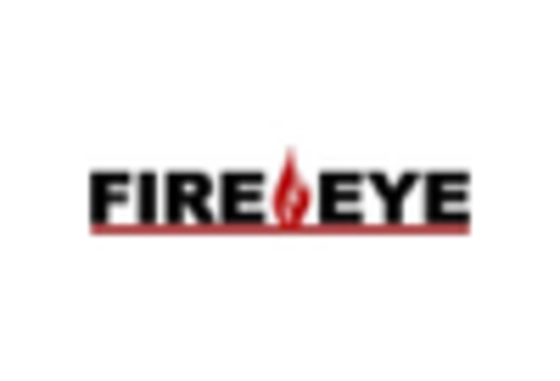The Advanced Persistent Threat Protection Market is characterized by a dynamic competitive landscape, driven by the increasing sophistication of cyber threats and the growing need for robust security solutions. Major players such as CrowdStrike (US), Palo Alto Networks (US), and FireEye (US) are at the forefront, each adopting distinct strategies to enhance their market positioning. CrowdStrike (US) emphasizes innovation through its cloud-native platform, focusing on AI-driven threat detection and response capabilities. Meanwhile, Palo Alto Networks (US) is pursuing aggressive regional expansion, particularly in Asia-Pacific, to capture emerging market opportunities. FireEye (US), on the other hand, is concentrating on strategic partnerships to bolster its threat intelligence offerings, thereby enhancing its competitive edge in the market.
The business tactics employed by these companies reflect a concerted effort to optimize their operational frameworks. For instance, localizing manufacturing and supply chain optimization are becoming increasingly vital as companies seek to mitigate risks associated with global supply chain disruptions. The market structure appears moderately fragmented, with a mix of established players and emerging startups, each contributing to a competitive environment that fosters innovation and agility.
In August 2025, CrowdStrike (US) announced a strategic partnership with a leading cloud service provider to enhance its threat detection capabilities. This collaboration is poised to leverage advanced machine learning algorithms, thereby improving the speed and accuracy of threat identification. Such a move not only strengthens CrowdStrike's service offerings but also positions it favorably against competitors by integrating cutting-edge technology into its solutions.
In September 2025, Palo Alto Networks (US) launched a new suite of security products aimed at small and medium-sized enterprises (SMEs). This initiative reflects a strategic pivot to address the unique security challenges faced by SMEs, which are often overlooked by larger security providers. By tailoring solutions to this segment, Palo Alto Networks (US) is likely to capture a significant share of the market, thereby enhancing its competitive positioning.
In July 2025, FireEye (US) expanded its threat intelligence services through the acquisition of a cybersecurity analytics firm. This acquisition is strategically significant as it not only broadens FireEye's capabilities but also enhances its ability to provide comprehensive threat intelligence to its clients. Such strategic moves indicate a trend towards consolidation in the market, where companies seek to bolster their offerings through acquisitions.
As of October 2025, the competitive trends in the Advanced Persistent Threat Protection Market are increasingly defined by digitalization, AI integration, and a focus on sustainability. Strategic alliances are becoming a cornerstone of competitive differentiation, enabling companies to pool resources and expertise. Looking ahead, it appears that the competitive landscape will continue to evolve, with a shift from price-based competition towards innovation, technology, and supply chain reliability becoming paramount. This evolution suggests that companies that prioritize these aspects will likely emerge as leaders in the market.

















Leave a Comment